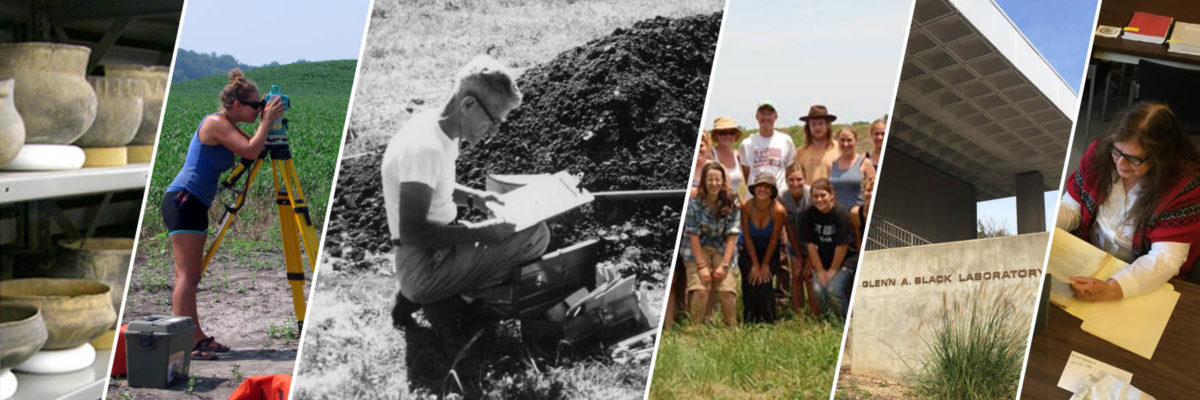If you read new Executive Director Ed Herrmann’s piece on the merger and upcoming renovations, you might imagine the magnitude of the change is in store for the Glenn A. Black Laboratory of Archaeology and our sister organization, the Mathers Museum of World Cultures. The GBL opened in 1971, and now nears 50 years in age, so renovations are long overdue. If you’ve ever been in the Angel Repository, you know just how little room we actually have to work in, so I welcome the opportunity to update mechanicals, rethink spaces, and gain areas in which to work through more efficient storage and collaborative space development. From my perspective, this change provides an opportunity to think and build toward a future that serves and engages the campus, the region, and the world in new ways. As we work together I stand in awe of the staff of the Mathers Museum, without whose collegiality, imagination, and professionalism keeps me optimistic in light of mountains of work to do. When we re-open, I imagine a Glenn Black Laboratory of Archaeology, which will continue as a lab within the new complex, enhanced with new space for working, accessible and re-thought storage for comparative collections, capacity for distance education and collaboration, and new technologies.
We started off the semester with the Campus Archaeology Symposium, held in conjunction with the Wylie House Museum, and co-directed by Carey Champion and Liz Watts Malouchos. The symposium was supported by a grant from the IU Bicentennial, and allowed us to gather speakers from around Indiana in discussions of archaeology done on college campuses. IU has a rich history hidden beneath the surface, and our Wylie house project engaged students and recovered historic information related to IU’s early faculty.
In October the GBL helped support the Plains Anthropological Conference which came to Bloomington for the first time. I got to help lead a group of conferees to Angel Mounds, along with Melody and Amanda Burtt. If there is one thing that I’ve learned about archaeologists, it’s that if you take them to a site, forget the tour—they will scatter like autumn leaves.
In addition, we hosted talk by Dr. Jonathan Reyman, formerly of the Illinois State Museum, who told us about his long-term project to distribute legally-acquired molted feathers to members of tribes in the Southwest, including many Pueblo communities for use. We hosted multiple classes who used the gallery exhibits, and received tours or targeted talks. In all, it’s been a very exciting and busy semester, and the pace is not likely to change any time soon!

April K. Sievert, GBL Director

